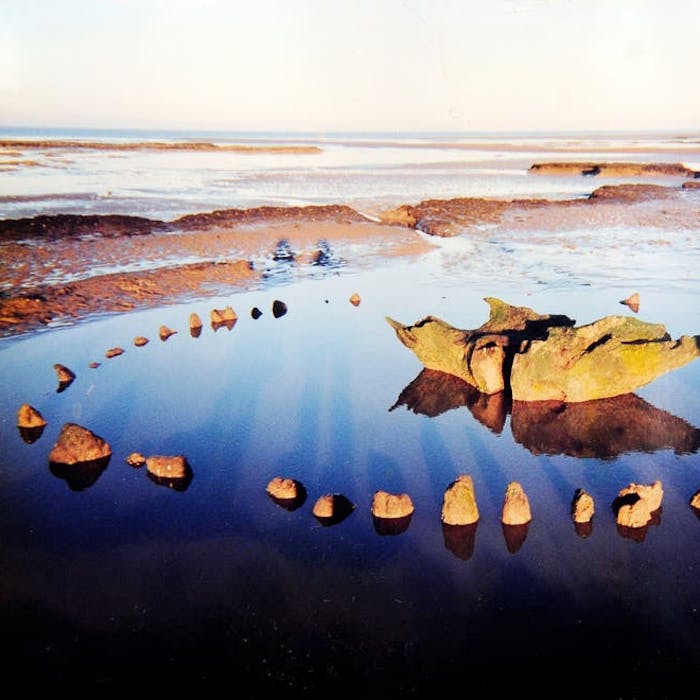
Seahenge
In 1998, wave erosion gradually revealed a mysterious circle of tree stumps on the beach near Holme-next-the-Sea in Norfolk. After excavation, scientists discovered that the trees had all been felled in the spring of 2049 BC. The purpose of "Seahenge" remains unknown.
Seahenge consists of a huge tree stump that was buried upside down with its roots uppermost, with 55 timber posts surrounding it, which had been cut from smaller oaks in the surrounding area. These oak posts, some up to 3m tall, were tightly packed in a 6.6m diameter circle with their bark-covered sides facing outwards. One of the trunks had a narrow Y fork in it, permitting access to the central area. Another post had been placed outside this entrance, which would have prevented anyone from seeing inside.
At the time it was built, during the early Bronze Age in Britain, the area was a salt marsh, not a sandy beach.
Contemporary theory is that it was used for ritual purposes, but no one really knows. One theory is that the upturned tree stump was put there so dead bodies could be laid on top and birds and animals could then pick away at the flesh and bones.
Gradually, over 3000-4000 years, the wood became enclosed in protective peat and then covered by the sea.
In order to preserve the timber in the site from exposure to air, it was excavated in Spring 1999, and its remains taken to an archeological museum and then a maritime museum for preservation of the wood. In 1999 a reproduction was put up by some of the excavators, near the site. In 2008, after further study, a second reproduction was erected near the original's location.
A second wood circle was found nearby on the beach a few years later. It has been left in situ and is disintegrating, but has been dated to exactly the same year - and it may be that Seahenge was part of a burial complex.
Seahenge is now on display at Lynn Museum in King's Lynn but will be part of an exhibition at the British Museum, London in 2022.
Further reading
Links to external websites are not maintained by Bite Sized Britain. They are provided to give users access to additional information. Bite Sized Britain is not responsible for the content of these external websites.
